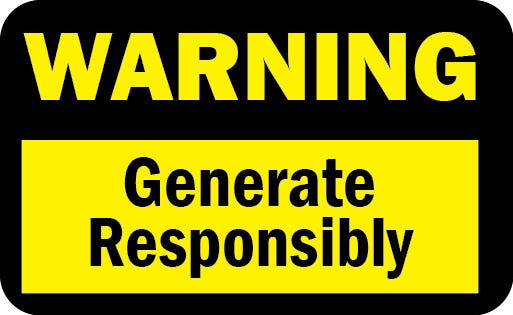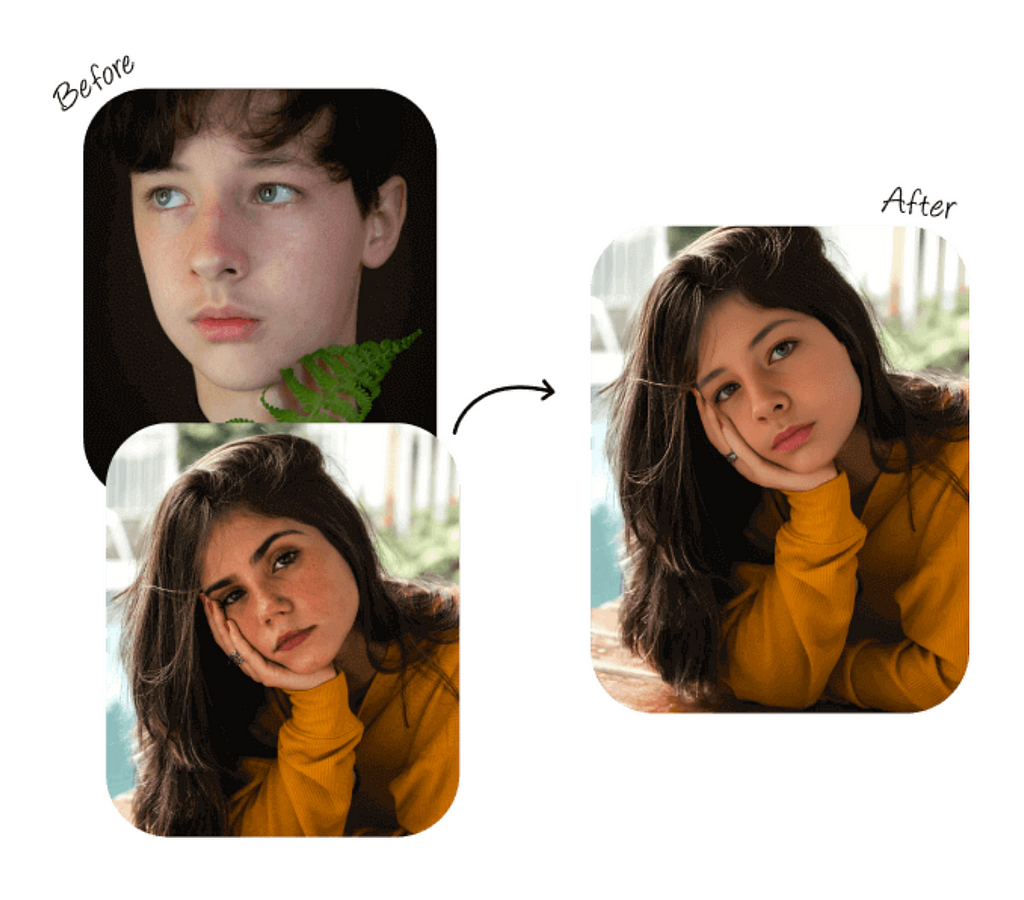Generative AI raises legal and ethical issues for all of us

A couple of months ago I posted my concerns about the ethics of Generative Art and AI/ChatGPT. In that piece, I suggested that there need to be some Ethics and Standards guidelines in place to guide UX and Graphics professionals in the use of these technologies. A recent abuse of these technologies makes it imperative that the professional associations develop and enforce these guidelines, that governments create legislation to govern the use of of these technologies, that the creators of any AI technology embed something in the image that says the image used AI, and that clients demand disclosure of the use of these technologies in any contracts for creative services.
A recent news story revealed the dark side of these technologies:
In a small town in Spain, AI-Generated naked images of over 20 girls between the ages of 11 and 17, have circulating through Social Media. As we all know, these images (created using Clothesoff ) will follow them for the rest of their lives.
How about this one that just got posted to Twitter/X ? Pick a photo, any photo, from anywhere and swap faces with the click of a mouse.

We all knew this was coming and, still, we remain silent.
Those are extreme uses of Generated Imaging, but it is a subject that we need to discuss before we are forced to discuss it.
As a writer, chatGPT has become a staple in my research for the books I write and the courses I prepare for LinkedIn Learning. Even so, I approach chatGPT much like Ronald Reagan approached the Russians during the Nuclear Disarmament talks: Trust but verify.
In my research for a recent LinkedIn Learning course, I asked chatGPT to explain how to do code introspection in a prototyping application. I got a solid 800 words on how to do it including which icon on the menu bar to click to start the process and where that icon is located. Very impressive except for one thing, the application doesn’t have a code introspection feature let alone an icon on the menu bar. I knew this before typing in the prompt and was curious to see if chatGPT would tell me: “Nope, No such feature.”
I recently had a rather fascinating discussion with a photographer friend around Generative Fill in Photoshop. I thought it was a neat feature but had issues with it. As I pointed out in my Medium piece, a friend of mine used it on an image he owns and I have no problem with that. Where I had a problem, as I pointed out to my photographer friend, was applying this technology to photographs he may have sold to a Stock Service or to clients. He had a “So what?” response.
Not so fast.
Let’s assume it is a portrait being used for a persona or some other promotional piece either purchased from the photographer or from a Stock site. The artist decides the clothes color needs to be changed or Generative Fill applied to fill out the rest of the subject’s torso. Is that what the artist sold to the client or the Stock agency. Not really. As I pointed out to my photographer friend, it is like putting legs on the Mona Lisa.
There are two issues here. The first is should both the photographer and the owner of the Generated Fill content be compensated for the alteration? Now for the big one: What happens if either party objects and sues? In an interesting twist to this Getty Images is suing Stability AI for using its images to train AI.
The Stock Sites are wrestling with this issue. Last year Getty Images banned the the upload and sale of AI images when they considered the legal implications of this technology. Newgrounds has banned them in its Terms Of Use. PurplePort calling this technology “Artmageddon” has banned AI Generated images and this is a trend that must continue.
Getty, in my humble opinion, may just be on the right track. They have developed their own Generative AI tool using an AI model from Nvidia that has been trained on over 477 million images in Getty’s library. Getty also also includes in its royalty-free license protection against copyright lawsuits and the right to “perpetual, world-wide, nonexclusive use across all media”.
It is also encouraging to see Adobe and Shutterstock not only using their collections but also considering or reimbursing those who have images within their collections for use by others creating AI images.
Adobe is is sellling Firefly credits using the rather disingenuous reason being , “We sorta need to pay for extra server space.” and “Oh yeah, we are developing a compensation fund for Generative art drawn from Adobe Stock.” I also should add Adobe is leading the charge for accountability, transparency and the ethical use of Generative AI through its involvement in the Content Authenticity Initiative and Coalition for Content Provenance and Authenticity. They are also adding tamper-proof metadata to Firefly-generated images.
Shutterstock is creating a Contributor Fund for images sold to train text-to-image models. I am sure more companies will follow suit but, frankly, it is not enough. Even so, it is, at least, a start.
When it comes to the creation process, hardly a day goes by where web designers bubble on Twitter/X they now use chatGPT and a Code Editor to build web sites for their clients. That’s great but do the clients know you are doing this? Then again, they retained this individual so the assumption has to be the designer knows what he or she is doing to build the site from from scratch. This assumption that clients are naive has to change.
Generative Art, driven by code not prompts, has been with us for years. It is showing up in art galleries and being sold for substantial amounts on the auction sites. These pieces come with a provenance outlining ownership from creation onwards. Maybe a similar policy should be applied to Generative AI, something Adobe is involved in creating.. Then again, the really cool Generative AI art is nothing more than a series of carefully constructed prompts. Maybe, the provenance should be attached to the prompt, not the results. Of course, the root of provenance is copyright.
So who owns the copyright of an AI Generated image. The U.S. Copyright Review Board has sort of weighed in.
In 2019 a Dr. Steven Thaler attempted to copyright an image- Recent Entrance to Paradise- on behalf of an AI algorithm. He was refused the copyright and appealed. In February of 2022 the appeal was denied. In essence the original denial was the image failed to include an element of “human authorship” and they added “the Office will refuse to register a claim if it determines that a human being did not create the work.” A rather murky position but those who code Generative Art can rest easy, those who solely use prompts for their work may have issues. Only time will tell.
Bottom line? When it comes to the use of AI technologies:
Generate Responsibly.
Further Reading:
Getty Bans AI Generated Images
Adobe’s Content Authenticity Initiative
Adobe co-founds the Coalition for Content Provenance and Authenticity standards organization.
Harvard Business Review:Generative AI Has an Intellectual Property Problem
Newgrounds Terms of Use Guidelines
Shutterstock’s Contributors Fund
We need to have “The Talk” was originally published in UX Collective on Medium, where people are continuing the conversation by highlighting and responding to this story.